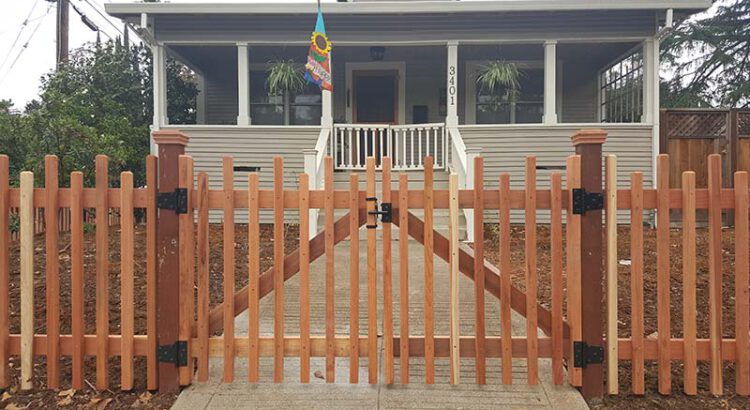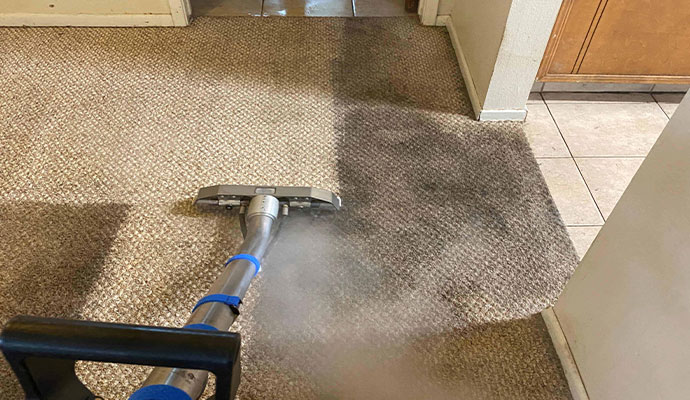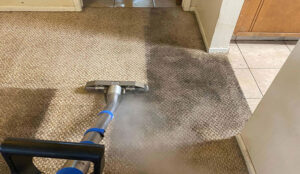Wooden Fence NJ is a great option for your home. They are durable, affordable, and can be used in different styles. They also increase the value of your home.
There are a variety of wood options to choose from, including cedar, cypress, and redwood. These options are often treated with eco-friendly stabilizers and preservatives that do not harm the environment.
Wooden fences can add privacy and beauty to your home, but they can be expensive. The cost of wooden fencing depends on several factors, including type of wood used and the size of the area being fenced in. Angi has a good breakdown of these costs, which include the price per linear foot for materials and installation. The number of gates may also affect the cost.
If you’re going to have a professional install your new fence, they will need to measure the area to get an accurate quote. You can measure your yard with a tape measure or look at a plat of survey to determine the amount of linear feet your fence will cover. Once you know how many linear feet your fence will be, you can use a calculator to get an estimate of how much it will cost.
Before the contractors begin working, they will need to remove any trees or bushes that may be in the way of your fence. They will also need to dig holes for the posts and pour concrete in them. Unless you are very handy, it is not a good idea to try and do this yourself. The concrete will need to dry for a week or more before you can attach the slats of your fence. The slats will need to be nailed to the concrete using stainless steel nails or screws. Any other kind of metal will bleed when it gets wet and leave unsightly black stains on your pretty new fence.
The most important factor affecting the price of a wooden fence is the type of wood used. Cypress is a popular choice, as it is less expensive than other kinds of wood and it’s more resistant to water damage. It also has natural oils that help repel insects, although you will still need to treat it occasionally.
Staining your wooden fence is also important, especially if you live in a rainy environment. The lumber that makes up a fence derives from trees that are perpetually thirsty. As such, they retain their absorptive qualities after being cut and sawn. The water that soaks into the wood over time will eventually freeze and expand, leading to rotting. If you stain the wood, this won’t happen.
Durability
Wood fences provide a definitive boundary for your property and keep kids, pets, and stray animals from wandering into your yard. They also add to your home’s curb appeal and can transform its look. However, wood fences are not indestructible and can deteriorate over time. To protect your investment, you should inspect your fence regularly for damage and signs of rot. To maintain the beauty of your wooden fence, you should also re-stain it every few years.
When installing a wooden fence, you need to choose the right materials. Generally, fence-builders use cedar or redwood for posts and pickets. The in-fill boards can be made of a variety of materials, including pine, cedar, and cypress. These materials are selected for their aesthetics and durability. You should also consider your budget and property needs when choosing a material for your fence.
Posts for a wood fence should be constructed of pressure-treated lumber, says Ethan Elaison, co-owner of Elaison Lumber in Fresno. They are the part of a fence that goes into the ground, and they are particularly susceptible to moisture and insects. In addition, the posts need to be sturdy enough to hold the weight of the in-fill boards and the gate. In addition to selecting a durable in-fill board material, you should also select the best railings for your fence. The rails are the horizontal components that connect the posts and allow in-fill boards to be nailed to them. In most cases, the rails are manufactured in six or eight-foot sections and fastened to each other to form a single unit.
Before installing your wooden fence, prepare the area by digging holes that are a few inches deep. Then, place concrete in the hole and tamp it down using a garden hoe. Make sure the concrete is level and refer to the manufacturer’s directions for the exact amount of mix needed to prepare the concrete. Once the concrete is set, you can begin constructing your fence.
Wooden fences are vulnerable to moisture, which causes rot and encourages the growth of moss. To reduce the risk of water intrusion, stain the fence soon after installation. Staining is an excellent way to keep the fence safe from rotting and will help restore the natural protective oils in the wood. After the stain dries, you can remove any dirt or debris from the surface of the fence and then power wash it.
Maintenance
Wood fences require some maintenance to ensure that they continue to do their job – whether it’s providing privacy, creating boundaries or marking property lines. This maintenance includes inspections, staining, cleaning and trimming. Regularly inspecting your fence will help you identify damage and wear so that it can be addressed promptly.
Wooden fences are constantly exposed to the elements, including harsh sun, strong winds and soaking rain and snow. These conditions can accelerate deterioration and cause splintering, warping, cracking and rot. Regularly oiling, sealing and staining the fence will protect it from these environmental stresses and extend its lifespan.
It’s important to apply a moisture-repelling, water-based stain within the first year after installation. This will protect the wood from sunlight’s harmful UV rays and prevent the wood from absorbing moisture that can lead to rot. Staining also helps the wood retain its color.
Once the initial staining is done, it’s a good idea to apply a fresh coat every two or three years. This will remove dirt, moss, mildew and graying and help the fence look newer for longer.
Another important maintenance task is to trim any vegetation that is close to the fence. Overgrown shrubs and vines can cause the wood to become soaked with moisture, which can speed up rot and decay. Regularly trimming vegetation will minimize contact between the foliage and the wall, preventing this moisture build-up.
The connection points between the vertical in-fill panels and the horizontal rails are critical to the strength of the wooden fence. They should be inspected for signs of damage or wear, such as loose boards and broken pickets. If you find any of these issues, they should be fixed promptly to avoid further deterioration and rot.
It’s also a good idea to regularly check the yard and garden for buried utility services, such as sewer and water lines. If you encounter any buried pipes or wires, call the local utilities locator hotline to have them marked before breaking ground on your fence project. This will save you the hassle of digging up your fence later on.
Appearance
A wood fence is a barrier to protect and mark your property. It can also be used as a privacy screen or a decorative garden structure. It can be made from a variety of materials, but wood is often the preferred choice because it looks more natural and has good longevity. It is also available in a wide range of styles and colors. Some types of wood, such as oak, have a rich color and visible wavy grain patterns that add to their beauty.
To ensure that your wood fence is in good condition, you should regularly check it for signs of rot or other damage. If you notice a problem, make repairs as soon as possible. This will prevent the rot from spreading to other parts of your home and yard. It is a good idea to use pressure treated wood, which has been protected from fungal decay and insect infestations. This will help prolong the life of your fence.
The main components of a wood fence are posts and rails. Posts are the vertical components that support and hold all other pieces. Rails are the horizontal components that connect all of the posts parallel to the ground. The posts and rails are secured to each other with nails or screws. Many wooden fences have finials, or ornamental caps, which add to the visual appeal of the fence.
Once the posts and rails are in place, you can begin building your fence. First, decide where you want your fence to be and mark the area with chalk or another marking device. Next, contact your local “Call Before You Dig” number to make sure there are no underground water or gas lines in the area where you will be digging. This is important because you will be using a shovel to dig holes for the posts and may run into these lines.
A well-constructed wood fence will last for a long time, but it requires regular maintenance to keep its good appearance. It should be cleaned with a power washer or scrub brush and wood cleaner to remove dirt and grime from the surface of the fence. After cleaning the fence, it should be sanded and stained or painted to preserve the wood.


